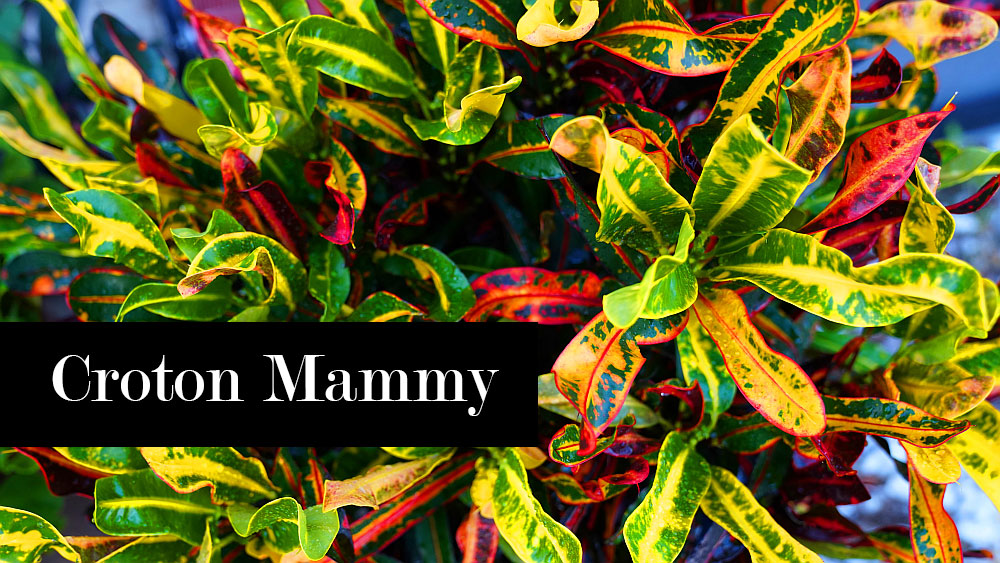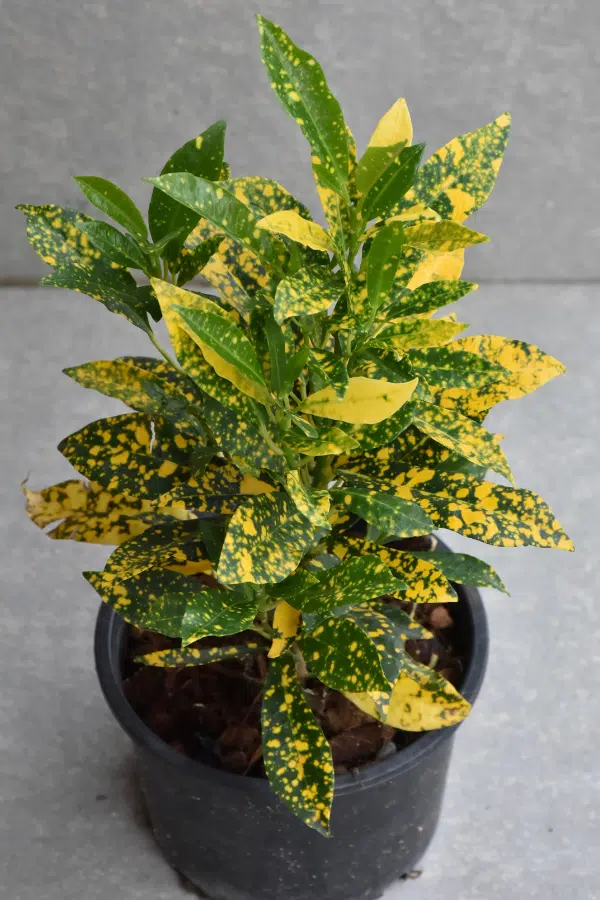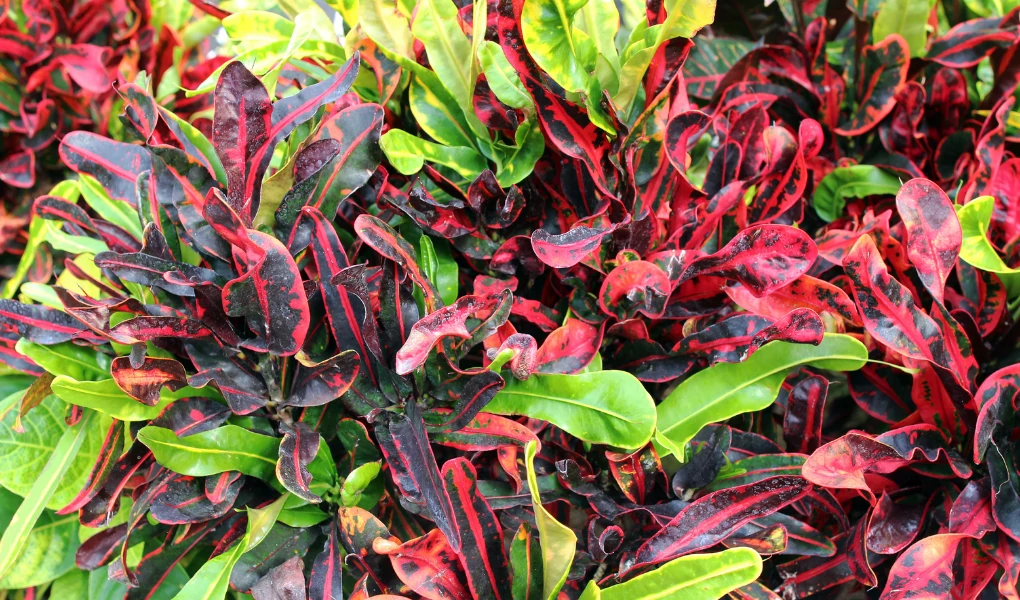Crotons are among the most popular houseplants grown today thanks to their attractive, colorful foliage. Codiaeum variegatum is the scientific name for these plants that are native to islands in the western Pacific. Over 100 different croton varieties exist, featuring leaves in multiple shades of green, yellow, orange, red, purple, and brown.
When cared for properly, crotons make excellent additions to indoor spaces like homes and offices. Their striking leaves add pops of color and visual interest. This article provides an overview of some of the most popular croton varieties along with tips for growing these dramatic tropical plants.
Also, read our Croton Plant Care Guide
How Often to Water Croton Plant?
Main Croton Varieties
Codiaeum variegatum pictum

The Codiaeum variegatum pictum variety features leathery, oval-shaped leaves displaying a rainbow of colors. Each leaf can show mixes of green, yellow, orange, red, pink, and purple. This variety is also known as Joseph’s Coat.
Key Features:
- Striking multicolored foliage
- Grows up to 6 feet tall indoors
- Does well in bright light
Cultivation Tips:
- Provide very bright, indirect light
- Keep soil slightly moist but not soggy
- Mist leaves regularly to boost humidity
Codiaeum variegatum mammy

Mammy crotons have broad, dark green leaves punctuated by yellow-gold centers. The striking contrast makes this variety stand out.
Key Features:
- Dark green leaves with light yellow centers
- Compact growth habit
- Ideal for containers
Cultivation Tips:
- Give bright to moderate indirect light
- Allow soil to dry out between waterings
- Limit fertilizer to avoid leaf burn
Codiaeum variegatum gold dust

The gold dust croton has light green oval leaves with speckles of yellow spots. The foliage resembles confetti.
Key Features:
- Green leaves spotted with yellow
- Grows up to 3 feet tall
- Adds color without bold patterns
Cultivation Tips:
- Provide bright indirect sunlight
- Water when top inch of soil is dry
- Mist plant regularly for humidity
Other Varieties
Many other croton varieties exist beyond the most common types. Some others include:
- Petra – Deep burgundy leaves with green and yellow edges
- Black cardinal – Dark blackish-purple leaves
- Strawberry ice – Pale green and white variegated leaves
Growing Conditions

Crotons thrive when given appropriate amounts of light, water, heat, and humidity.
Light – Bright indirect light encourages the most vivid leaf colors. Some direct sun is fine but avoid scorching the leaves.
Water – Allow soil to partially dry out between waterings. Overwatering can lead to root rot.
Temperature – Average room temperatures between 60-80°F are ideal. Keep away from cold drafts.
Humidity – Mist croton leaves regularly and use a pebble tray to provide 40-50% humidity.
Care Tips

Follow these tips to keep croton houseplants looking their best:
Soil – Use a well-draining potting mix and provide good drainage holes. Crotons dislike soggy soil.
Fertilizer – Feed monthly in the spring and summer with a balanced liquid fertilizer diluted to half strength.
Pruning – Prune leggy growth as needed to shape the plant. Limit pruning in the fall and winter.
Pest Control – Check regularly for pests like spider mites, mealybugs, and aphids. Treat promptly before they spread.
Propagation
Crotons can be propagated from stem cuttings or seeds.
Cuttings – Take 4-6 inch cuttings in spring or summer. Dip the cut end in rooting hormone then plant in potting mix. Keep warm and moist until roots emerge.
Seeds – Plant seeds in warm soil. Maintain moisture and warmth. Germination may take several weeks. Transplant seedlings when a few sets of leaves emerge.
Conclusion
Crotons offer a huge range of leaf shapes, sizes, and colors to suit any indoor gardener. Follow the care tips outlined here to keep these tropical plants looking their vibrant best. Pay attention to light, water, and humidity needs. With the proper growing conditions, crotons will provide eye-catching color in any indoor space for years to come.
FAQ
What are the most popular indoor croton varieties?
Some of the most popular indoor crotons are Codiaeum variegatum pictum, mammy, and gold dust varieties. Joseph’s coat, petra, black cardinal, and strawberry ice are other common varieties.
How much light do croton plants need?
Crotons require very bright, indirect light to maintain the most intense leaf colors. Some direct morning sun is fine but avoid prolonged direct sun which can scorch leaves.
How often should you water a croton plant?
Water crotons when the top inch of soil becomes dry. Take care not to overwater, as crotons are prone to root rot with soggy soil. Allow more time between waterings in the colder months.
What causes croton leaves to drop?
Dropped leaves on a croton usually indicate improper growing conditions like overwatering, low light, low humidity, or cold drafts. Crotons naturally shed some older leaves as new growth appears.
How do you propagate croton houseplants?
Crotons can be propagated from stem cuttings taken in spring or summer. Remove lower leaves, dip the cut end in rooting hormone, then plant in potting mix. Keep warm and moist until roots form.
